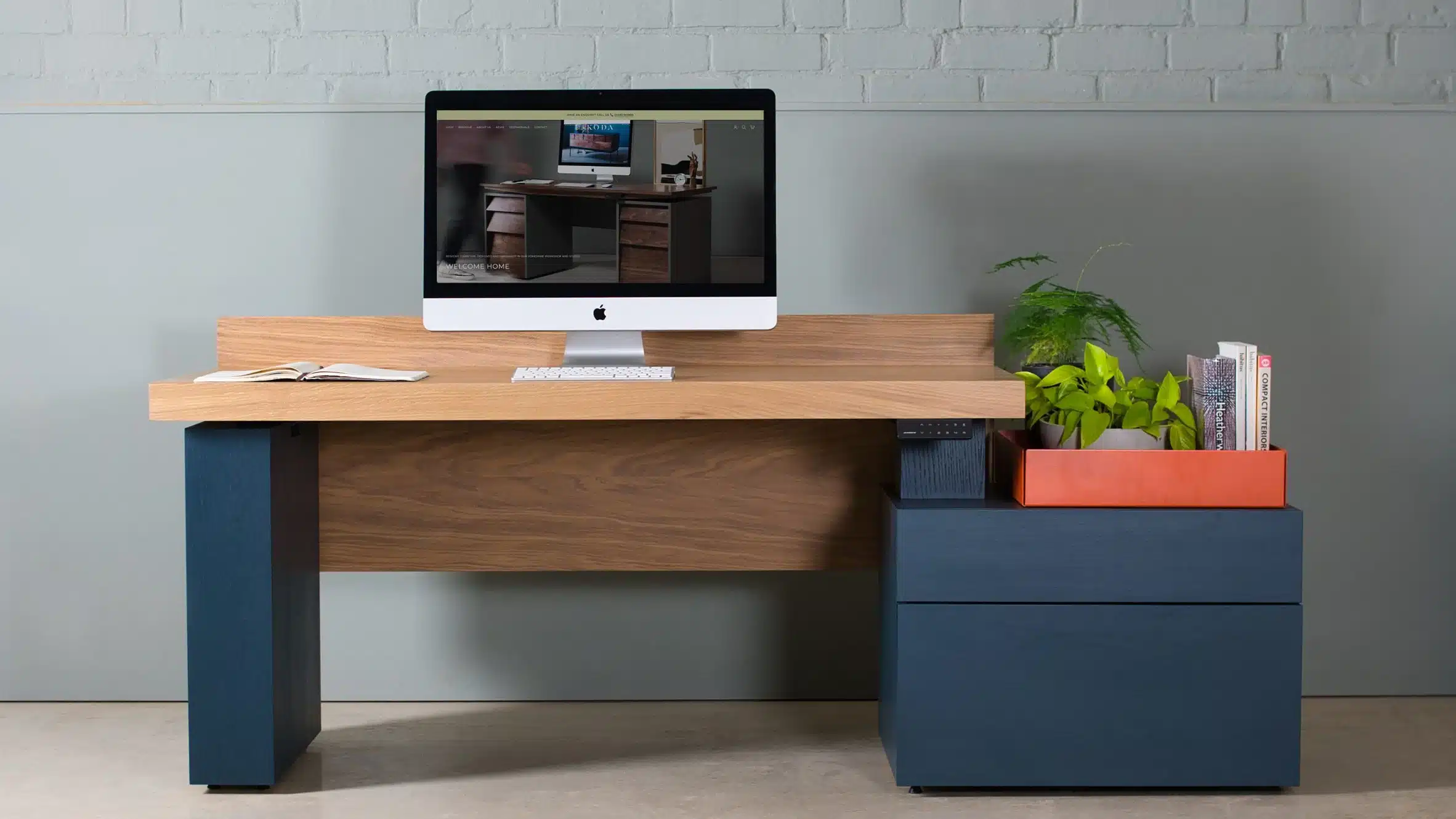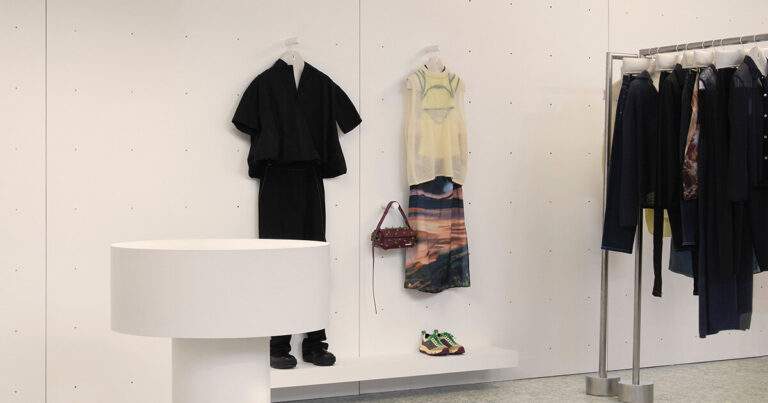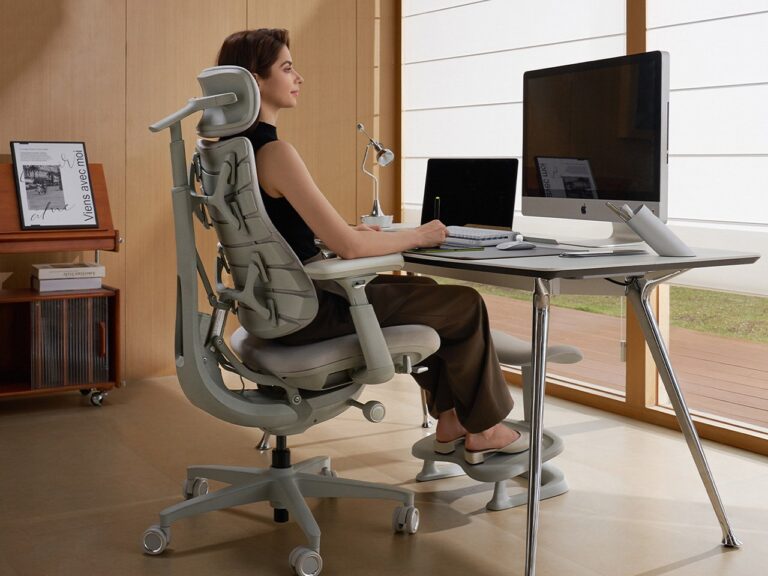Raze Sit-Stand Desk in English Oak by Koda
Yorkshire-based design brand Koda has introduced a remarkable addition to the modern workspace: the Raze Sit-Stand Desk. Designed in-house by managing director Jamie Hoyle and creative director Katherine Mathew, this piece combines cutting-edge ergonomic technology with age-old craftsmanship rooted in locally sourced English oak. The desk is a masterclass in balancing tradition with innovation—proving that functionality and artistry are not mutually exclusive.
Bridging Craftsmanship and Technology
The Raze Sit-Stand Desk is a bold statement in contemporary furniture design. While the material—solid English oak—evokes centuries of heritage and woodworking tradition, its expression is entirely modern. Gone are the ornate flourishes of classical woodworking. Instead, Hoyle and Mathew adopt a minimalist approach using geometric forms, sharp edges, and clean lines.
This shift in design ethos is more than aesthetic. It reflects a growing need to redefine workplace furniture as tools for wellness and dynamic living, not just static objects. The clean lines and sculptural silhouette create visual lightness, allowing the Raze Sit-Stand Desk to integrate seamlessly into both minimalist and more eclectic interiors.
Ergonomics Reinvented
Central to the Raze design is its height-adjustable mechanism. A discreet slimline touchscreen control is mounted beneath the desk’s edge, allowing the user to transition from sitting to standing with a simple touch. The height can be adjusted from 720 to 1220 millimetres, accommodating a wide range of body types and work styles.
This feature isn’t just a nod to convenience—it responds directly to current ergonomic research. Prolonged sitting is increasingly linked to cardiovascular and metabolic health risks, and sit-stand desks are being widely recognized for promoting better circulation and improved posture throughout the day.
Koda’s execution of this mechanism is unusually elegant. Unlike many mechanical desks, the Raze Sit-Stand Desk integrates its motorized components invisibly within a finely crafted wooden shell. This careful blending of technology and craftsmanship ensures that the desk remains a piece of furniture—not just a device.
Material Intelligence and Sustainability
The use of English oak is a defining element of the project. Not only is the wood locally sourced, reducing the carbon footprint of transportation, but it also carries a deep sense of regional identity. The oak’s grain patterns are celebrated, not hidden, with each tabletop finished in a way that honors the natural complexity of the material.
The grain varies from piece to piece, ensuring that no two Raze desks are identical. This uniqueness is enhanced by the hand-finishing process, which retains the texture and warmth of the wood while maintaining a clean, refined edge.
Standard models feature a steel blue lacquer on the base and drawer units, a deliberate contrast to the warmth of the oak. However, Koda offers custom colorways upon request—demonstrating their commitment to personalization and design flexibility.
Furniture, Architecture, and Design Synergy
One of the most compelling aspects of the Raze Sit-Stand Desk is how it blurs the lines between furniture, interior design, and architecture. According to Jamie Hoyle, this was a core vision from the outset. “This desk embodies that vision – elevating everyday furniture through thoughtful design,” he said.
And indeed, the desk reads as a miniature architectural object. Its clean joinery, structural logic, and spatial presence suggest the same language of contemporary building design. It doesn’t merely fill a room—it contributes to its architectural character.
In a world where remote work, home offices, and adaptable workspaces are the new norm, the Raze Desk offers a response that is both functional and deeply intentional.
Image Description and Visual Experience
Although no images are provided here, the visual essence of the Raze Sit-Stand Desk is immediately striking. Picture a monolithic slab of oak with natural, swirling grain lines that cascade across its surface like a topographical map. The steel blue base sits firmly like an architectural plinth, its smooth finish offering contrast to the tactile grain of the wood. Hidden beneath the desk edge, a black touchscreen glows faintly—an invitation to move, shift, and reconfigure your working posture.
The drawers are seamless, designed without visible hardware, and open with a gentle push. Their interior is generous enough to house electronics, papers, and personal items, supporting both aesthetics and utility.
Why This Desk Matters Now
The Raze Sit-Stand Desk represents more than just good design—it signals a changing attitude toward work, sustainability, and the physical relationship we have with our environments. In an era where we demand more from our homes, offices, and bodies, the ability to integrate beauty, movement, and well-being into one object is profoundly valuable.
Koda’s approach here avoids gimmicks. There is no over-reliance on smart tech or flashy features. Instead, the Raze Sit-Stand Desk focuses on refined craft, ergonomic intelligence, and material honesty.
It becomes not just a surface to work on, but a tool for better living.
Final Critical Perspective
While the Raze Sit-Stand Desk excels in combining modern technology with handcrafted quality, it opens up an important conversation about how luxury and sustainability intersect. The use of solid English oak, while beautiful and durable, is not without environmental impact if not responsibly managed long-term. For the future, designs like this might further evolve by integrating reclaimed timber, carbon-neutral logistics, or open-source adjustability systems—pushing the balance of innovation, ethics, and beauty even further.
Until then, Raze stands as a benchmark for how work furniture can—and should—elevate both user experience and design culture.
For anyone looking for a reliable and up-to-date architectural resource, ArchUp offers fresh content covering projects, design, and competitions.
More on ArchUp:







